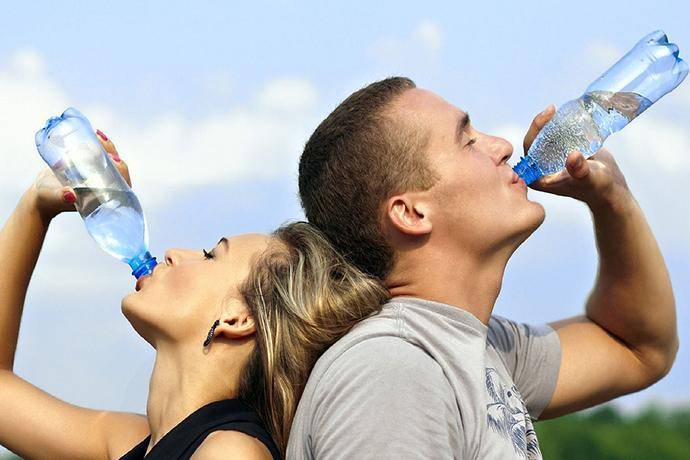In a world where the hustle and bustle of daily life often takes precedence over our well-being, one essential yet often overlooked aspect demands our attention: hydration. Water, the elixir of life, is not merely a thirst quencher but a vital component that underpins our health and vitality. From boosting cognitive function to regulating body temperature,the benefits of staying hydrated extend far beyond the simplistic idea of quenching thirst. This article delves into the art of hydration,exploring practical tips to incorporate sufficient water intake into our routines while uncovering why it matters more than we might realize.Join us as we navigate the streams of hydration,ensuring that our bodies remain well-nourished,energized,and thriving.
table of Contents
- Understanding the Importance of Hydration for Overall Health
- Recognizing the Signs and Symptoms of Dehydration
- Daily Hydration Needs: How much Water Do You Really Need?
- Exploring Different Sources of Hydration Beyond Water
- tips for Incorporating Hydration into Your Daily Routine
- The Impact of Climate and Activity Level on Hydration Needs
- Hydration Strategies for Specific Groups: Athletes, Seniors, and Kids
- hydrating Foods: Delicious Options to Boost Your Fluid Intake
- The Role of Hydration in mental and Physical Performance
- Debunking Common Myths About Hydration and Fluid Intake
- Q&A
- In Retrospect
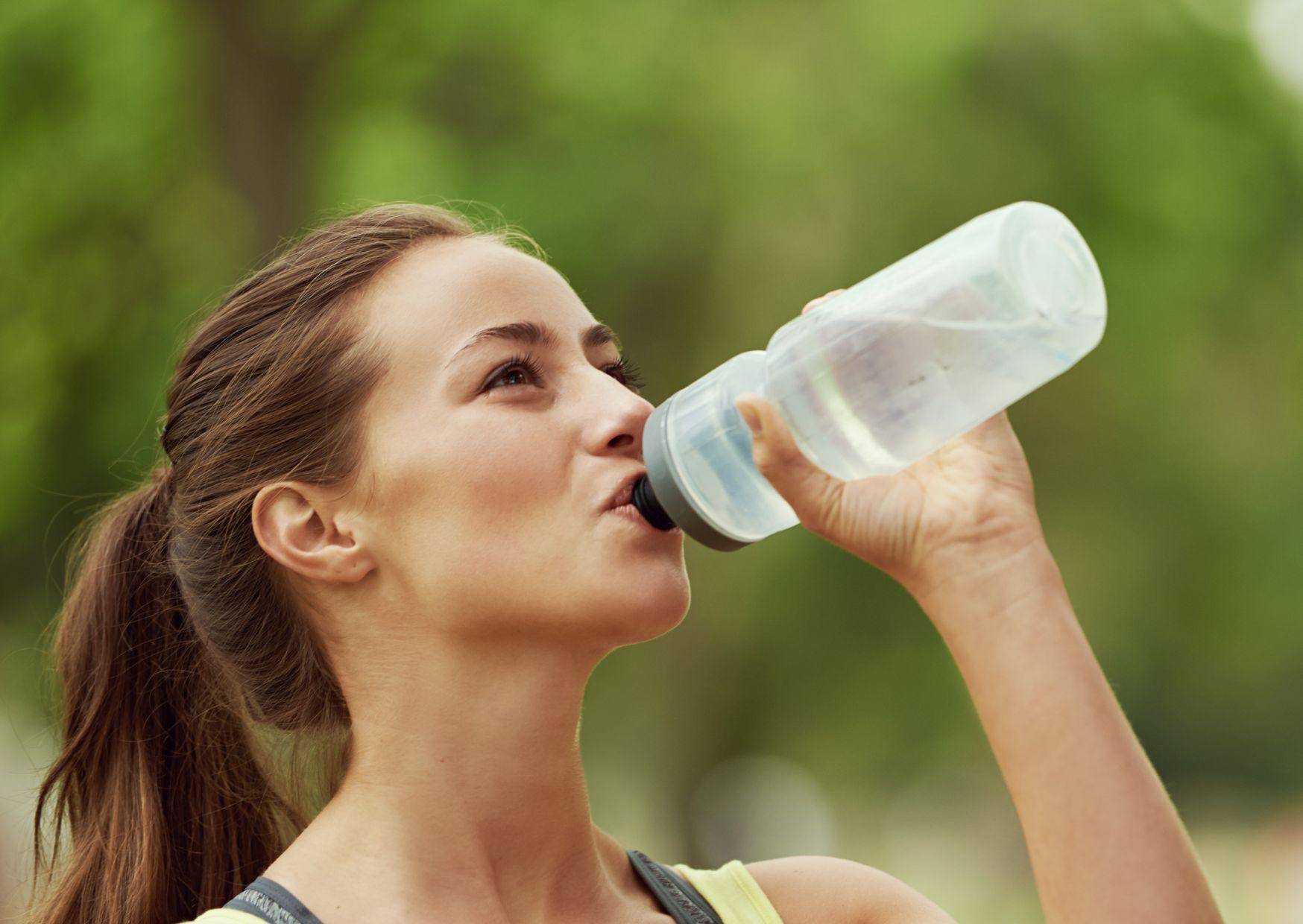
Understanding the importance of Hydration for Overall Health
Staying hydrated is essential for maintaining the body’s natural balance and facilitating numerous physiological processes. Water not only aids in digestion and nutrient absorption but also plays a critical role in regulating body temperature and maintaining healthy skin.Without adequate hydration, essential systems can become compromised, leading to fatigue, headaches, and impaired cognitive function. Recognizing these signs early on can help you take corrective steps to boost your hydration levels.
A reliable indicator of hydration status is the colour of your urine. Typically, a light yellow hue signals proper hydration, while darker shades indicate a need for more fluids. Hydration helps to keep your kidneys functioning efficiently by flushing out toxins and preventing kidney stones. An easy rule of thumb is to drink eight 8-ounce glasses of water daily, known as the ”8×8″ rule, though individual needs can vary based on factors like age, activity level, and climate.
Besides plain water, there are many delicious ways to keep your hydration levels up. Here are some hydrating foods to consider incorporating into your diet:
- Watermelon
- Cucumbers
- Oranges
- Strawberries
- Celery
Drinks such as herbal teas and flavored water can also offer hydration advantages without the calories. To enhance your experience, try infusing water with fresh fruit, cucumber, or mint. This not only adds flavor but makes hydration enjoyable and refreshing, ensuring that you are more likely to meet your daily fluid intake goals.
During exercise or hot weather, your body loses additional fluids through sweat, making it crucial to replenish what is lost. A simple table can summarize hydration needs based on activity levels:
| Activity Level | Recommended Water Intake |
|---|---|
| inactive | 8 cups/day |
| Light Exercise | 10 cups/day |
| Moderate Exercise | 12 cups/day |
| Heavy Exercise | 15 cups/day |
understanding the nuances of hydration can significantly impact your overall health. It is indeed not merely about quenching thirst; it involves a comprehensive approach to achieving well-being, enhancing physical performance, and boosting mental clarity. By prioritizing hydration,you support your body in its vital functions and improve your quality of life.
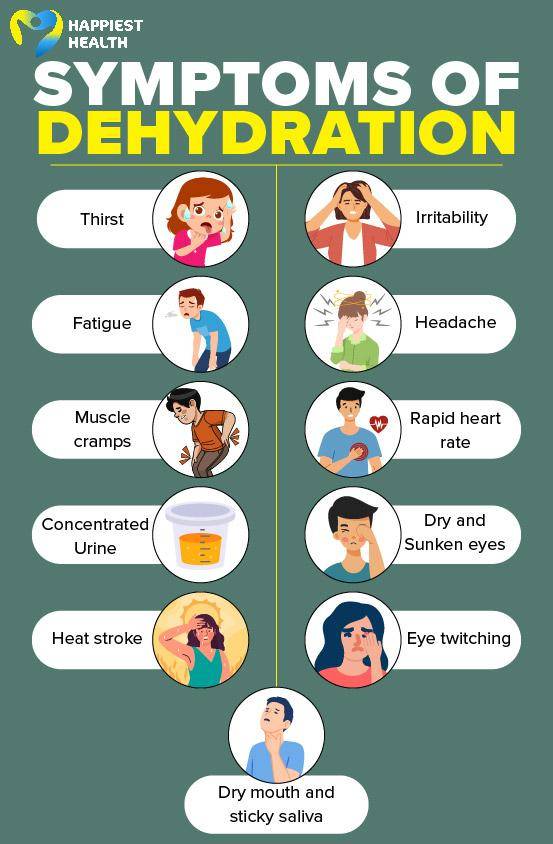
Recognizing the Signs and Symptoms of Dehydration
Dehydration is often overlooked, yet recognizing its signs and symptoms is essential for maintaining overall health. The human body is composed of approximately 60% water, and losing just a small percentage can lead to noticeable effects. Understanding how to detect dehydration can empower individuals to take proactive measures to stay hydrated.
One of the first signs of dehydration is thirst.While it may seem obvious, ignoring this natural cue can escalate the problem. Other visible symptoms include:
- Dry mouth and throat
- Fatigue or drowsiness
- Dizziness or lightheadedness
In more severe cases, dehydration can manifest through physical changes. Those affected may experience a decrease in urine output or notice their urine appears darker than usual. Another critical indicator is:
| Urine Color | Hydration Status |
|---|---|
| Clear or light yellow | Well-Hydrated |
| Dark yellow | Dehydrated |
Physical activity and hot weather can intensify the risk of dehydration, making it crucial to monitor your body closely. Symptoms such as muscle cramps and increased heart rate often accompany dehydration due to electrolyte imbalance. Recognizing these signs early allows for timely intervention to replenish lost fluids.
Lastly, specific populations, including the elderly and young children, are more susceptible to dehydration. Their bodies may not signal thirst effectively, putting them at risk. Staying educated about the symptoms of dehydration can safeguard against potential complications, ensuring that everyone remains energized and healthy.
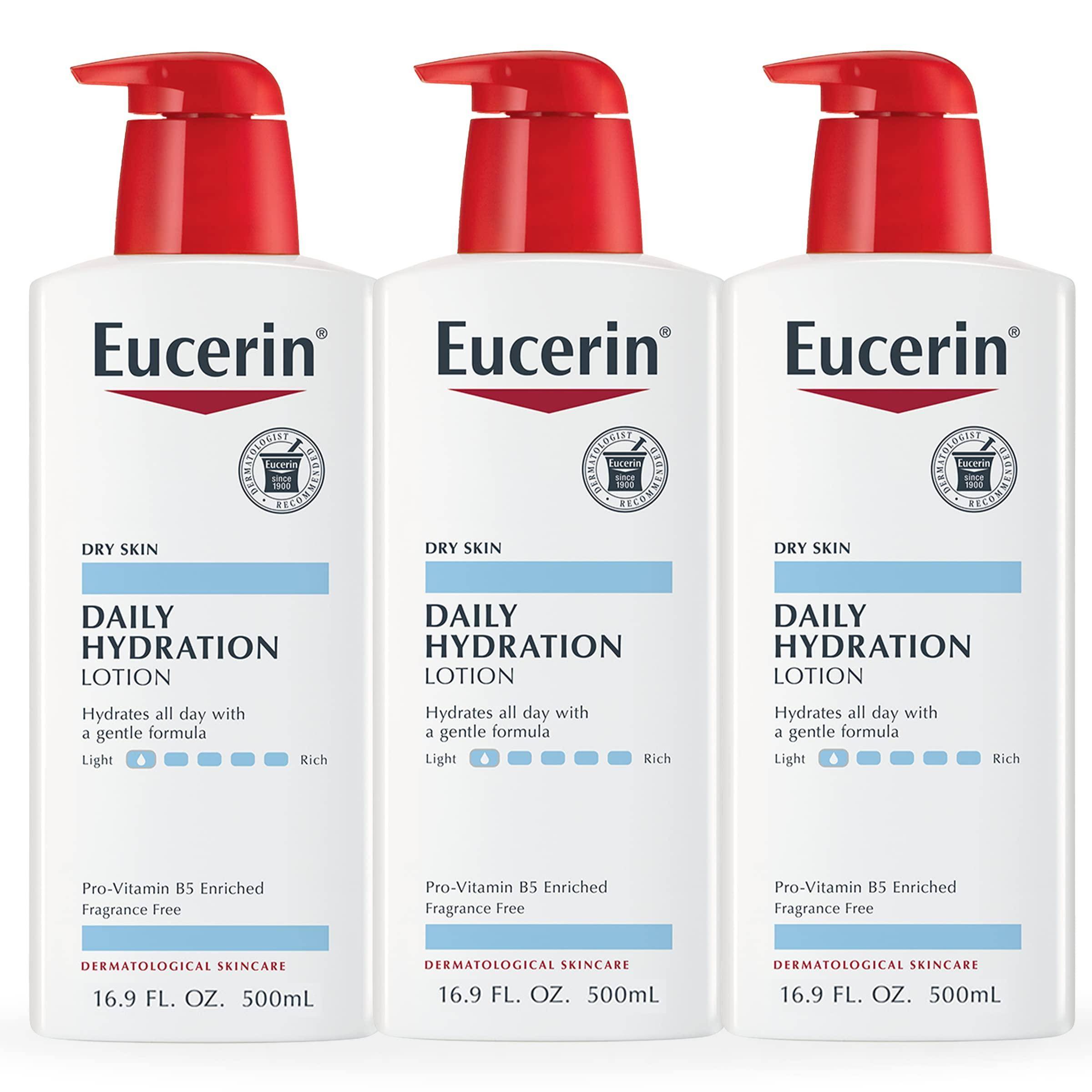
Daily Hydration Needs: How Much Water Do You Really Need?
Understanding your daily hydration needs is crucial for maintaining overall health. While the age-old advice of drinking eight glasses of water a day serves as a good starting point,individual requirements can vary significantly based on several factors. Body weight, activity level, climate, and even diet play pivotal roles in determining how much water you should consume daily.
Generally, a common guideline is to aim for about half your body weight in ounces of water. Such as, if you weigh 150 pounds, approximately 75 ounces or about 9 cups of water would be your target. However, this is just a baseline; it’s important to listen to your body and adjust accordingly. Other factors that can increase your hydration needs include:
- physical activity: Higher levels of physical exertion increase sweat and fluid loss.
- Heat: Hot and humid environments can significantly deplete your hydration.
- Health conditions: Illnesses such as fever or diarrhea can raise your fluid requirements.
- Diet: high-protein or high-fiber diets may necessitate increased water intake.
It’s also beneficial to consider how hydration isn’t solely dependent on water. various foods contribute to your overall hydration status. Foods like fruits and vegetables can provide significant water. Here’s a simple table highlighting some hydrating foods:
| Food | Water Content (%) |
|---|---|
| Watermelon | 92% |
| Cucumber | 96% |
| Strawberries | 91% |
| Spinach | 91% |
staying hydrated is not just about quenching thirst; it’s essential for the optimal functioning of your body. Proper hydration supports digestion, boosts energy levels, and enhances physical performance.Moreover, adequate water intake can help regulate body temperature and keep your skin healthy. So, make a conscious effort to track your hydration and always strive to meet your personalized daily needs, adjusting as necessary based on circumstances.
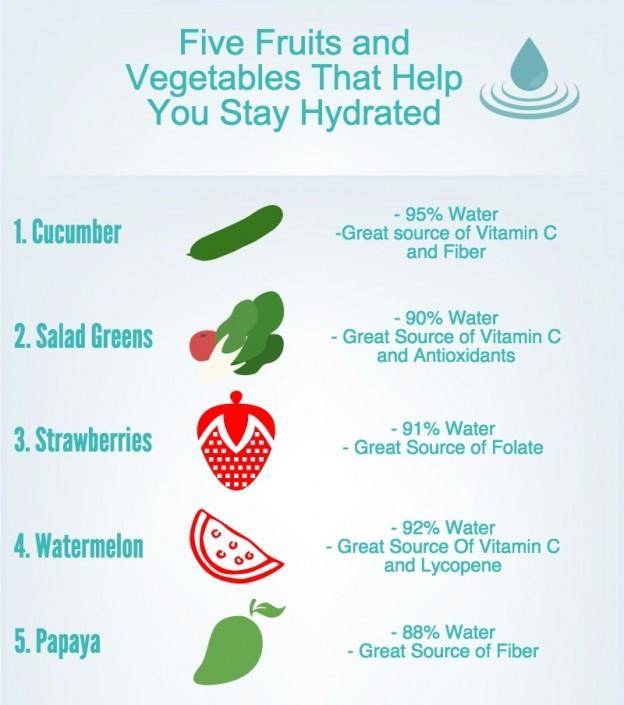
Exploring Different Sources of Hydration Beyond Water
While water is frequently enough the first thing that comes to mind when we think of hydration, there are numerous other sources that can contribute to our daily fluid intake. These sources can be both delicious and nutritious, providing not just hydration but also essential vitamins and minerals.Incorporating a variety of beverages and hydrating foods can make staying hydrated an enjoyable part of our daily routine.
Fruits and vegetables are fantastic options for hydration. Many of them have high water content, making them a refreshing way to quench your thirst while also benefiting from their fiber and nutrients. Consider including the following hydrating options in your diet:
- Watermelon – Composed of about 92% water.
- Cucumber - Contains around 95% water.
- Strawberries – Made up of about 91% water.
- Celery – Has about 95% water, plus a nice crunch.
Beyond solid foods, beverages also play a significant role in hydration. Herbal teas, coconut water, and even broths can be surprisingly effective at keeping you hydrated. Here’s a swift look at some flavorful drink options:
| Beverage | Hydration Level (%) |
|---|---|
| Herbal Tea | 99% |
| coconut Water | 95% |
| Vegetable Broth | 95% |
| Fruit-Infused Water | 100% |
For those who enjoy a bit of fizz, sparkling water can be a fun and enjoyable way to stay hydrated. Many brands offer flavored options without added sugars,making them a guilt-free treat.Additionally, electrolyte drinks are useful for replenishing lost fluids after exercise or during hot weather, provided they are consumed in moderation.
it’s essential to acknowledge that lifestyle choices, like consuming caffeine or alcohol, can impact hydration levels. Caffeinated beverages can have a diuretic effect, leading to increased urination, while alcoholic drinks can dehydrate the body if consumed excessively. Balancing these drinks with hydrating foods and water can ensure optimal hydration.
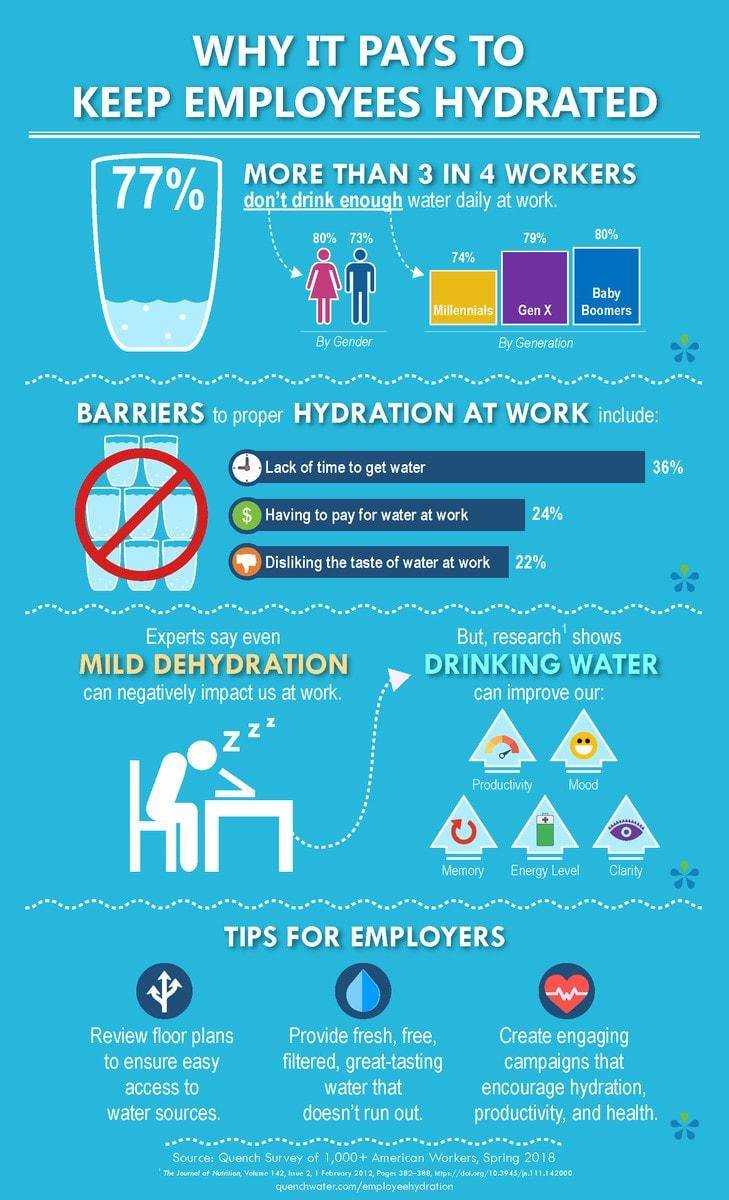
tips for Incorporating Hydration into Your Daily Routine
Staying hydrated doesn’t have to be a chore. By making small changes to your daily routine, you can seamlessly incorporate hydration into your lifestyle. Here are some practical tips to get you started:
- Start your day with water: Upon waking up, drink a glass of water. This kickstarts your metabolism and helps rehydrate your body after hours of sleep.
- Set reminders: Use your phone or an app to set hydration reminders throughout the day.A gentle nudge can keep you on track and ensure you drink consistently.
- Keep water visible: Place a water bottle on your desk, kitchen counter, or bag. Having water within your sight increases the likelihood of reaching for it.
- Infuse your water: If plain water bores you, infuse it with fruits, herbs, or even vegetables. Mint and cucumber, or lemon and ginger, can make hydration much more enjoyable.
- Track your intake: Consider using a hydration tracker app or a journal to log your daily water intake. Seeing your progress can motivate you to meet your hydration goals.
Incorporating hydration during meals can also play a crucial role in your overall water intake. Drinking a glass of water before or alongside your meals not only helps with digestion but also keeps you feeling satisfied. Here’s a simple scheduling idea:
| Time of Day | Water Intake Suggestions |
|---|---|
| Morning | 1 glass of water as soon as you wake up |
| During Breakfast | 1 glass of water or herbal tea |
| Midday (Lunch) | 1 glass of water before the meal |
| Afternoon | 1 glass of water while working |
| Evening (Dinner) | 1 glass of water with your meal |
Engaging in physical activity enhances the need for hydration. Whether you’re hitting the gym or simply taking a walk, it’s essential to drink water before, during, and after exercise. Keeping a water bottle handy during workouts is a great way to remind yourself to hydrate.
make hydration a fun part of your social activity. Encourage friends or family to join you in a water challenge, or plan outings that include hydrating drinks, such as smoothies or coconut water.By turning hydration into a shared experience, you’ll likely cultivate a healthy habit that lasts.
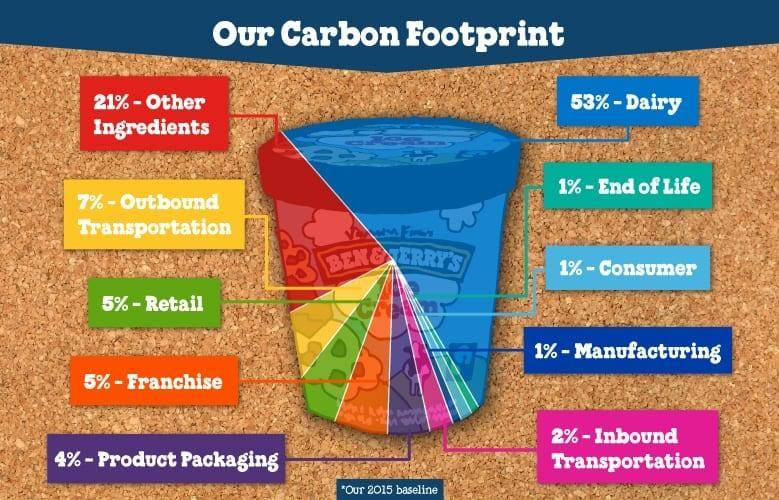
The Impact of Climate and Activity Level on Hydration Needs
Hydration needs can vary drastically depending on the climate one resides in and the level of physical activity one engages in.In hot and humid environments, the body loses fluids at a quicker rate through perspiration. This not only demands an increase in liquid intake but also requires a mindful approach to replenish electrolytes lost through sweating. In contrast, colder climates can trick us into thinking we need to hydrate less, even though dehydration can still occur due to dry air and indoor heating.
Activity level plays a crucial role in determining hydration needs. For those participating in regular exercise or labor-intensive jobs, the demand for fluids skyrockets.During vigorous workouts, the body can lose up to 2-3 liters of water per hour, especially if the workout is prolonged and intense. Hydration strategies during these periods must include not just water, but also ‘sports drinks‘ that help replace essential electrolytes, ensuring optimal performance and recovery.
Individuals are encouraged to regularly assess their hydration needs through various methods. For instance, paying attention to the color of urine can provide valuable insights. A light yellow hue often indicates adequate hydration, while dark yellow or amber suggests a need for more fluids. Additionally, keeping a personal hydration log can help identify patterns related to climate and activity levels, guiding future daily goals.
It’s important to remember that not all fluids are created equal when it comes to hydration; some can actively contribute to dehydration. Consider the following sources:
- Water: the best choice for hydration
- Caffeinated Drinks: Can have a diuretic effect, perhaps leading to increased fluid loss
- alcohol: Dehydrates the body and should be consumed in moderation
To make hydration more engaging and enjoyable, it’s beneficial to incorporate foods into the diet that are naturally high in water content. Below is a simple table showcasing some excellent options:
| Food | Water Content (%) |
|---|---|
| watermelon | 92 |
| Cucumbers | 95 |
| Oranges | 86 |
| Strawberries | 91 |
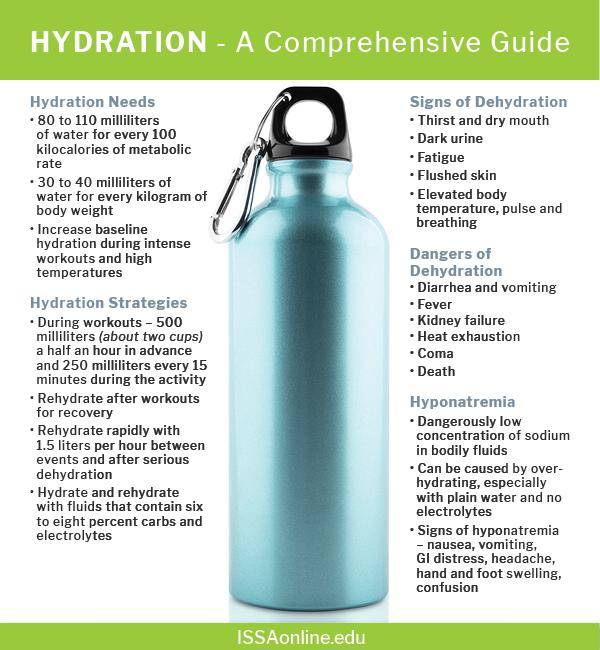
Hydration Strategies for Specific Groups: athletes, Seniors, and Kids
When it comes to hydration, different groups have unique needs that should be addressed for optimal health and performance. For athletes, maintaining fluid balance is crucial to maximize endurance and prevent fatigue. They should aim to consume water and electrolyte-rich fluids before, during, and after exercise. This can frequently enough include sports drinks that replenish lost electrolytes, especially during extended or intense workouts. An effective strategy is to drink:
- 500 ml (16 oz) of water 2-3 hours before an event
- 250 ml (8 oz) of water 20-30 minutes prior to activity
- 150-300 ml (5-10 oz) every 15-20 minutes during exercise
Seniors, conversely, often face challenges with hydration due to reduced thirst sensation and potential medication side effects. It is essential for older adults to adopt strategies that encourage regular fluid intake. They should not rely solely on thirst cues but set reminders to drink water throughout the day. Consider incorporating hydration-friendly foods like:
- Grapes
- Celery
- Watermelon
Additionally, seniors should also be aware of caffeine and alcohol, which can lead to increased fluid loss. It’s advisable to pair these beverages with extra water to maintain balance.
For children, fostering good hydration habits early on can instill lifelong health benefits. Kids may not always recognize their thirst, especially during play. Parents and caregivers play a crucial role in encouraging children to drink regularly, especially during physical activities. A fun way to make hydration appealing is to offer flavored water or smoothies. Recommended strategies include:
- Using colorful, fun water bottles
- Providing rewards for regular water intake
- Incorporating hydration into games or activities
In addition to plain water, children can also hydrate through refreshing fruits and vegetables. Understanding the hydration levels of these foods is useful, and a simple table to reference hydration levels might look like this:
| Food Item | Water Content (%) |
|---|---|
| watermelon | 92 |
| Cucumber | 95 |
| Strawberries | 91 |
| Peaches | 89 |
Ultimately, understanding the unique hydration needs of athletes, seniors, and children is key to promoting good health and performance across all life stages. By employing tailored strategies,each demographic can effectively maintain hydration and enjoy its numerous benefits.
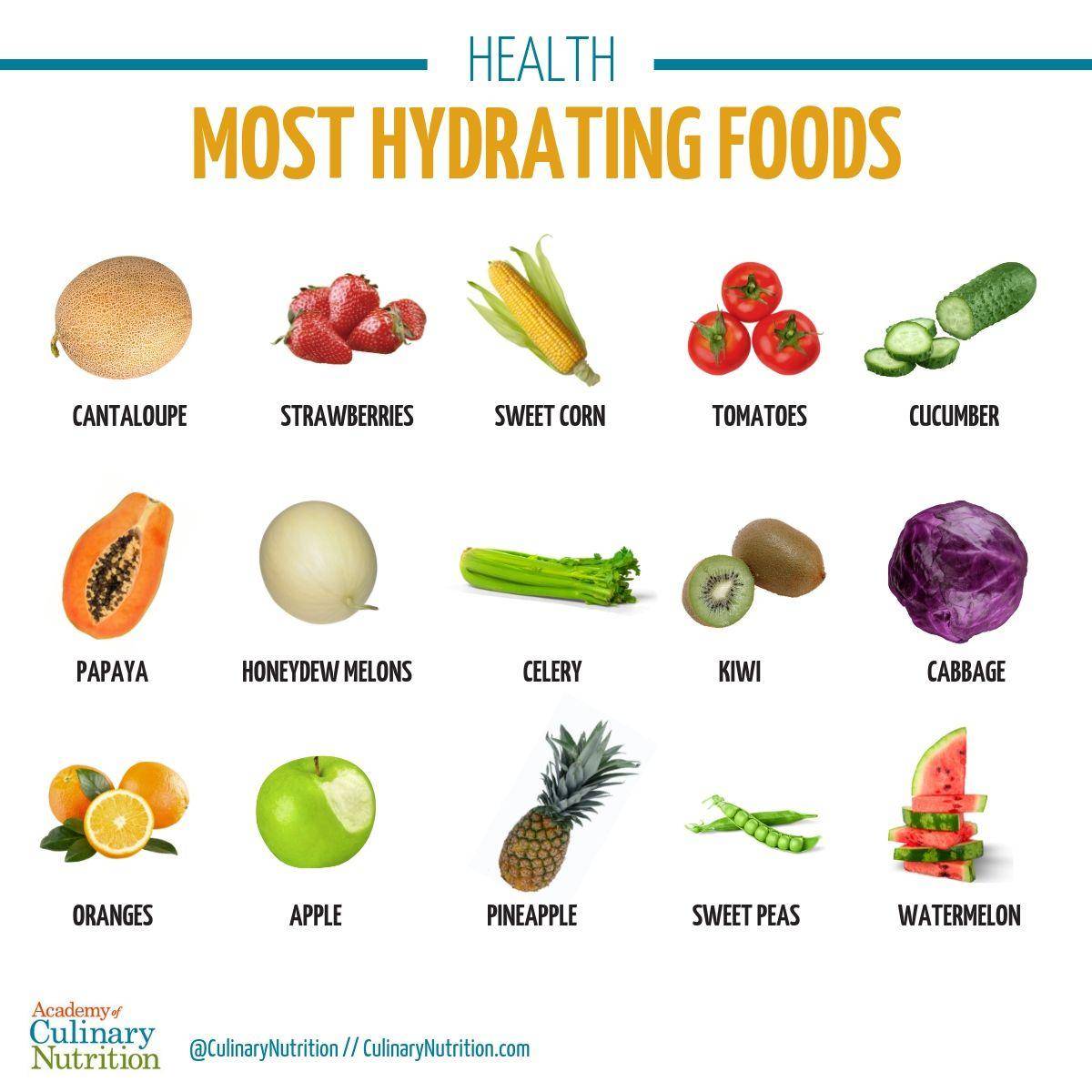
Hydrating Foods: Delicious Options to Boost Your fluid intake
staying hydrated doesn’t solely rely on drinking water; incorporating hydrating foods into your diet can significantly enhance your fluid intake. These foods not only quench your thirst but also provide essential nutrients that help you feel refreshed and rejuvenated. Here are some delicious options that you can easily add to your meals and snacks.
Watermelon is frequently enough regarded as the ultimate hydrating fruit, as it consists of over 90% water. Not only is it a refreshing treat on a hot day, but it’s also packed with vitamins A and C, making it a great addition to fruit salads or smoothies. try pairing chunks of watermelon with feta cheese and mint for a delightful summer salad that satisfies both hunger and hydration.
Cucumbers are another fantastic option, boasting a water content of around 95%.Their crisp texture and mild flavor make them versatile for salads, sandwiches, or even as refreshing low-calorie snacks. For an extra zing, try slicing cucumbers and drizzling them with lemon juice and a sprinkle of salt—it’s a simple yet satisfying way to enjoy this hydrating veggie.
Strawberries are not only sweet and delicious but also consist of approximately 91% water. These berries can be enjoyed on their own, blended into smoothies, or added to yogurt for a burst of flavor and moisture. Plus, they are rich in antioxidants and vitamin C, which can help support your immune system while keeping you hydrated.
| Food | Water Content | Serving Suggestions |
|---|---|---|
| Watermelon | 92% | Fruit Salads, Smoothies |
| cucumbers | 95% | Salads, Snacks |
| Strawberries | 91% | Yogurt, Smoothies |
| Celery | 95% | Snacks, Juices |
| Oranges | 86% | Juices, Fresh Fruit |
don’t overlook celery, which is surprisingly hydrating with its 95% water content. Its crunchy texture makes it a perfect base for snacking, especially when paired with hummus or nut butter. Celery sticks can also act as a fresh ingredient in salads, adding both moisture and a satisfying crunch. oranges are not only great for hydration at 86% water content, but they are also loaded with vitamin C. Whether enjoyed fresh or squeezed into a juice, they provide a tasty hydration boost any time of the day.
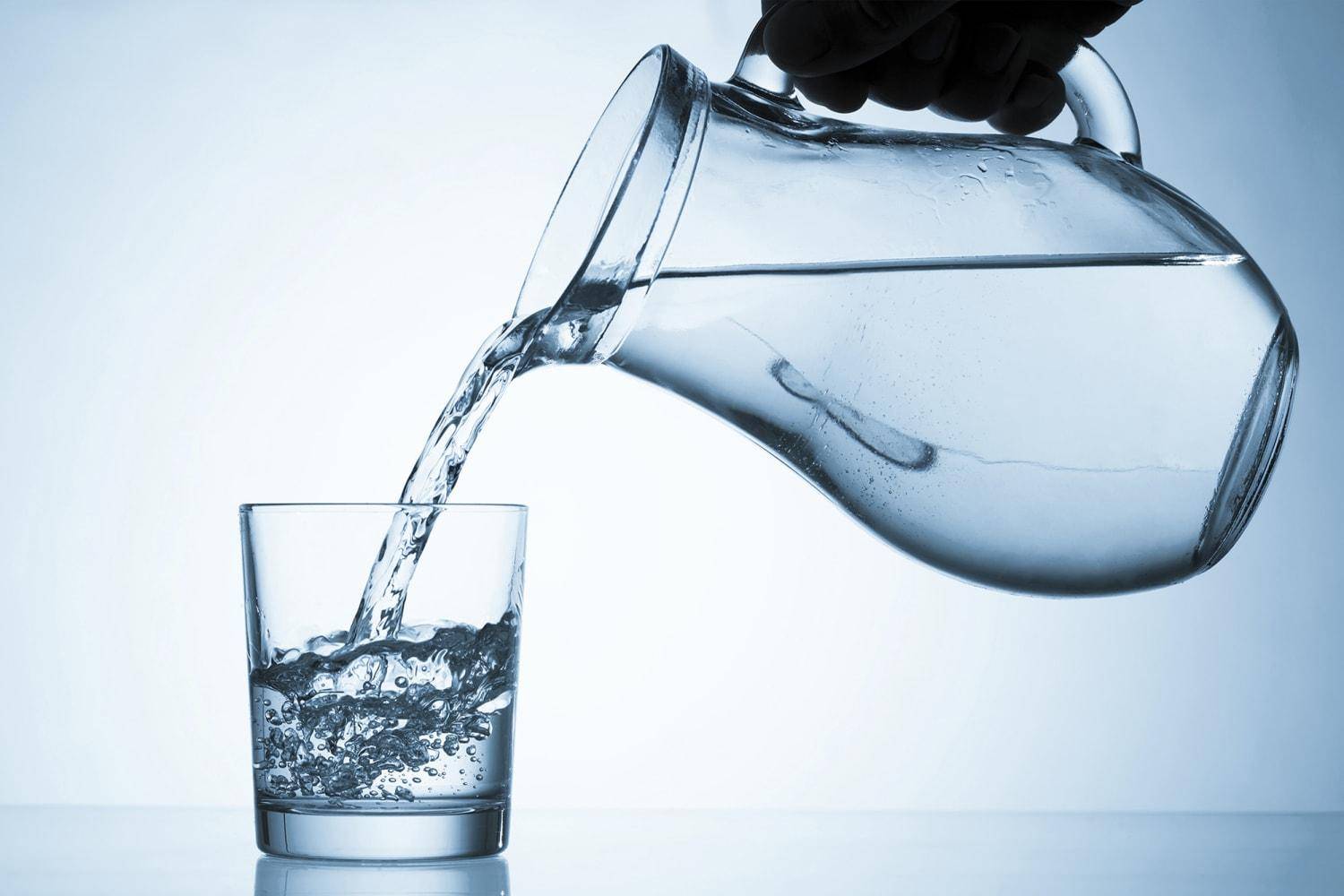
The Role of hydration in Mental and Physical Performance
when it comes to optimizing both mental and physical performance, hydration frequently enough takes center stage yet remains overlooked. The human brain consists of about 75% water, and even a slight drop in hydration levels can lead to noticeable impairments in cognitive functions. For instance, studies have shown that mild dehydration can reduce concentration, alertness, and short-term memory.This is particularly critical for individuals involved in demanding cognitive tasks, where focus and mental clarity are crucial.
Physical performance is equally affected by hydration. Water plays a vital role in regulating body temperature, maintaining electrolyte balance, and facilitating nutrient transport. Dehydration can lead to fatigue, increased heart rate, and decreased endurance. An athlete’s performance can significantly decline without proper hydration, as their muscles require adequate fluids to function optimally. It’s essential to recognize that hydration needs may vary from person to person,influenced by factors such as weight,activity level,and environmental conditions.
To help individuals maintain optimal hydration, here are some practical tips:
- Drink Before You Feel Thirsty: Thirst is a late indicator of dehydration. Aim to drink water regularly throughout the day.
- Incorporate Hydrating Foods: Include fruits and vegetables in your diet. Options like cucumbers, watermelon, and oranges are excellent sources of water.
- Set Reminders: Use apps or alarms to remind yourself to hydrate, particularly during busy days.
- Personalize Your Intake: Consider your activity level and climate; adjust your fluid intake accordingly.
To further strategize hydration habits, individuals can refer to the following table that summarizes daily fluid intake recommendations:
| Demographic | Daily Water Intake |
|---|---|
| Adult Men | 3.7 liters (125 oz) |
| Adult Women | 2.7 liters (91 oz) |
| Active Individuals | Additional 1-2 liters |
| Children | 1.3 – 2.4 liters (44 – 81 oz) |
Incorporating regular hydration practices into your lifestyle can significantly enhance both mental and physical capacities. Whether you are studying for exams, tackling a complex project at work, or engaging in athletic pursuits, being well-hydrated encourages the body and mind to work in harmony. By prioritizing hydration,you pave the way for a more productive and energetic day,ultimately leading to better outcomes in all your activities.

Debunking Common Myths About Hydration and Fluid Intake
Many people harbor misconceptions about hydration that can lead to improper fluid intake and overall health complications. one prevalent myth is the notion that you must drink precisely eight glasses of water per day to stay adequately hydrated. In reality, individual hydration needs vary based on factors such as age, activity level, climate, and overall health. Instead of rigidly adhering to a global rule, it’s important to listen to your body and adjust your fluid intake accordingly.
Another common belief is that all beverages are equally effective at hydrating the body. While it’s true that fluid from various sources contributes to hydration, certain drinks can actually lead to dehydration.As an example, beverages high in caffeine, like coffee and energy drinks, and also sugary sodas, can have a diuretic effect, causing the body to lose more fluid than it gains. Water remains the most reliable and efficient choice for optimal hydration, enabling the body to perform its essential functions effectively.
many think that the color of their urine is a precise indicator of hydration levels. While urine color can provide some insights,it’s not infallible. Factors such as diet and medications can influence urine color, potentially leading to misconceptions about hydration status.rather than relying solely on this guideline, it’s best to pay attention to additional signals from your body, such as thirst, dry mouth, and fatigue, to determine if your drinking enough fluids.
Some individuals also believe that they only need to hydrate when feeling thirsty. However, thirst may not always be a reliable indicator, especially for older adults or those engaged in intense exercise. It’s beneficial to establish regular fluid intake habits throughout the day, irrespective of thirst cues. To help visualize hydration needs, consider maintaining a simple hydration log, tracking water intake along with physical activity to create a balanced routine.
many assume that foods do not play a significant role in hydration. In reality, certain fruits and vegetables have high water content and can greatly contribute to your daily intake. Foods such as watermelon, cucumbers, oranges, and strawberries are excellent sources of hydration. Here’s a brief overview of some hydrating foods:
| Food Item | Water Content (%) |
|---|---|
| Watermelon | 92 |
| Cucumbers | 95 |
| Oranges | 86 |
| Strawberries | 91 |
Q&A
Q&A: How to Stay Hydrated and Why It Matters
Q: Why is staying hydrated so important for our health?
A: Staying hydrated is crucial because water plays a vital role in nearly every bodily function. It helps regulate body temperature, lubricate joints, transport nutrients, and remove waste. Dehydration can lead to various health issues, such as headaches, fatigue, and more severe complications, making it essential to maintain proper hydration levels.
Q: How much water should I drink each day?
A: While the “eight glasses a day” rule is popular, hydration needs can vary based on factors like age, gender, activity level, and climate. A general guideline is to aim for at least 2-3 liters (or about 8-12 cups) per day. Listening to your body’s signals—like thirst and urine color—can also help determine your specific needs.
Q: Are there signs that indicate I might be dehydrated?
A: Yes, common signs of dehydration include dry mouth, dark yellow urine, fatigue, dizziness, and increased thirst. If you experience persistent symptoms or feel faint, it’s wise to hydrate and seek medical advice if symptoms continue.
Q: What are some effective ways to increase my water intake?
A: Incorporating hydrating foods into your diet, such as fruits (like watermelon and oranges) and vegetables (like cucumbers and lettuce), can boost your hydration. You can also carry a reusable water bottle, set reminders on your phone, or flavor your water with fruits or herbs for variety. These small changes can make a significant difference!
Q: Do other beverages count towards my hydration?
A: Yes, many beverages, such as herbal teas and diluted fruit juices, contribute to your daily hydration. However,it’s essential to balance these drinks with water,as some beverages can contain added sugars or caffeine,which may have dehydrating effects.Q: What about exercise and hydration?
A: Exercise significantly increases the need for hydration, as you lose water through sweat. It is indeed essential to hydrate before, during, and after physical activity to replace lost fluids and maintain optimal performance. Always consider the intensity and duration of your workout when planning your hydration strategy.Q: Are there special considerations for people in certain conditions, like pregnancy or illness?
A: Absolutely! Pregnant and breastfeeding women generally require additional fluid intake to support their bodies and their growing babies. Similarly, individuals with illnesses, particularly those accompanied by fever, vomiting, or diarrhea, should drink more water or electrolyte-replenishing fluids. Consulting a healthcare provider can offer personalized hydration strategies in these situations.
Q: How can I make hydrating a habit in my daily life?
A: Creating a routine can make a significant difference. Start by incorporating water breaks into your day—like after finishing a task or before meals.Surround yourself with reminders, whether it’s a marked water bottle or sticky notes. Consistency will help make hydration an automatic part of your daily life.
Q: What are some common myths about hydration?
A: One common myth is that you can drink too much water, leading to water intoxication. While rare, excessive water intake can dilute essential electrolytes in the body. it’s vital to maintain a balanced approach. Another myth is that caffeinated beverages dehydrate you. While caffeine has mild diuretic effects,studies suggest moderate intake does not lead to dehydration when consumed alongside sufficient hydration.
Q: what lasting benefits can I expect from staying hydrated?
A: Staying well-hydrated can improve skin health, enhance cognitive function, support digestion, boost energy levels, and even elevate mood. Over time, prioritizing hydration can lead to overall enhanced wellness and vitality. So,raise your glass and toast to the power of H2O!
In Retrospect
In a world brimming with distractions,the simple act of staying hydrated can often slip through the cracks of our busy lives. Yet, as we have explored, the importance of water extends far beyond quenching thirst; it is indeed a vital element that nourishes our bodies, enhances our cognitive function, and supports our overall well-being.
As you carry forth the insights shared within this article, consider your personal hydration journey a canvas. Each glass of water, each infused bottle of herbal tea, and each mindful sip contributes to a masterpiece of health and vitality. Remember, hydration is not just a task but a daily ritual—one that invites you to pause, reflect, and rejuvenate.
So, whether you’re sipping by the poolside or keeping your water bottle close at hand during a busy workday, embrace the power of hydration. In doing so, you’re not only nurturing your body but also unlocking the potential to thrive in every aspect of life. Cheers to a more vibrant, hydrated you!
